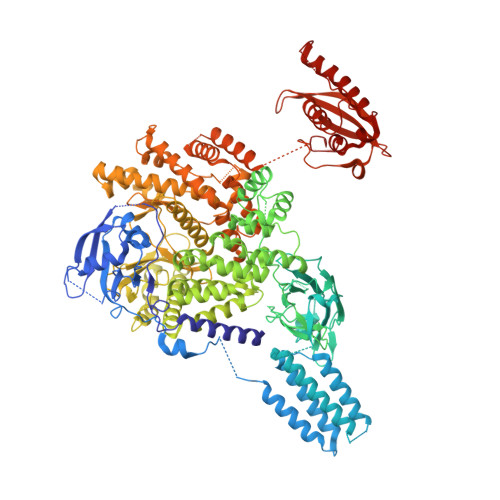Structural basis of phosphatidylinositol 3-kinase C2 alpha function.
Lo, W.T., Zhang, Y., Vadas, O., Roske, Y., Gulluni, F., De Santis, M.C., Zagar, A.V., Stephanowitz, H., Hirsch, E., Liu, F., Daumke, O., Kudryashev, M., Haucke, V.(2022) Nat Struct Mol Biol 29: 218-228
- PubMed: 35256802
- DOI: https://doi.org/10.1038/s41594-022-00730-w
- Primary Citation of Related Structures:
7BI2, 7BI4, 7BI6, 7BI9 - PubMed Abstract:
Phosphatidylinositol 3-kinase type 2α (PI3KC2α) is an essential member of the structurally unresolved class II PI3K family with crucial functions in lipid signaling, endocytosis, angiogenesis, viral replication, platelet formation and a role in mitosis. The molecular basis of these activities of PI3KC2α is poorly understood. Here, we report high-resolution crystal structures as well as a 4.4-Å cryogenic-electron microscopic (cryo-EM) structure of PI3KC2α in active and inactive conformations. We unravel a coincident mechanism of lipid-induced activation of PI3KC2α at membranes that involves large-scale repositioning of its Ras-binding and lipid-binding distal Phox-homology and C-C2 domains, and can serve as a model for the entire class II PI3K family. Moreover, we describe a PI3KC2α-specific helical bundle domain that underlies its scaffolding function at the mitotic spindle. Our results advance our understanding of PI3K biology and pave the way for the development of specific inhibitors of class II PI3K function with wide applications in biomedicine.
- Leibniz-Forschungsinstitut für Molekulare Pharmakologie (FMP), Berlin, Germany. lo@fmp-berlin.de.
Organizational Affiliation:



















